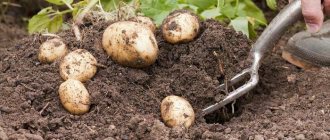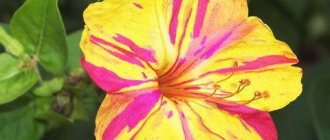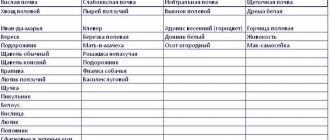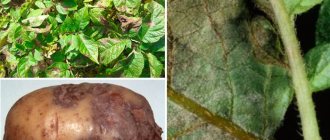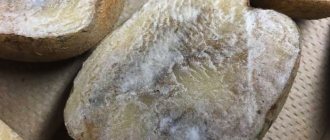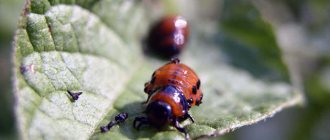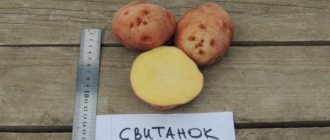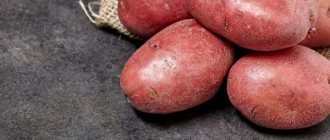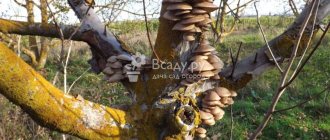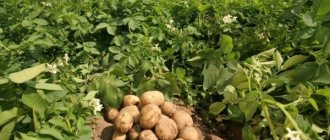Man has long appreciated this amazing plant. Cooks all over the world boil, fry, and bake potatoes. They prepare dumplings, potato pancakes, zeppelins, fries, pie... Now the Internet knows 3 275 potato recipes! And this figure is only growing.
Potatoes are widely used in folk medicine:
- Burns are treated with a compress of raw potatoes,
- The juice helps in the treatment of gastritis and stomach ulcers.
- Fresh, smooth skin is the result of a potato mask: mashed potatoes cooked for lunch with butter and milk are perfect for restoring skin health.
Let's take a closer look at this miracle vegetable.
What are potatoes, botanical description
Our “second bread”
Beginning gardeners often ask the question: “What family do potatoes belong to?” We answer: potatoes, like eggplants and tomatoes, are cultural “relatives” of the nightshade .
Potatoes are a perennial tuberous plant and are cultivated in agriculture as an annual plant. According to the type of culinary processing, it belongs to the group of vegetables. Most often propagated by tubers, less often by sprouts and cuttings. Breeders grow seedlings from seeds.
Interesting fact ! The name has Italian roots tartufolo - truffle, because the tubers are very similar to this strange mushroom.
Nightshade fruits are eaten as food, such as red tomatoes or purple eggplants. Potato berries , small green balls, are poisonous . They contain a large amount of solanine alkaloid and nicotinic acid. The plant produces these substances for the purpose of self-defense from pests and diseases. Eating them can cause serious food poisoning.
Tubers are ordinary buds, they only ripen underground. This is a reservoir of nutrients - starch, necessary for the successful functioning of the plant.
Potato bush
Health Hazard
You should not let your guard down when eating root tubers. The fact is that during long-term storage they are also capable of accumulating a toxic substance - solanine. It is not always possible to detect its presence in a product visually, so there is a general recommendation - to refrain from eating potatoes if they have been stored for more than 4-5 months.
You need to be especially careful with potatoes that have green skin. Typically, this color appears when exposed to sunlight and it indicates that the fruits have become especially dangerous. Under no circumstances should you eat them!
It certainly came as a surprise to many that, from a botanical point of view, potatoes are berries. Many are accustomed to the fact that only those that can be eaten are called berries, for example, the well-known raspberries, strawberries, blackberries, currants, sea buckthorn, and hawthorn. But botany claims that of the summer delicacies listed above, only currants, hawthorn and sea buckthorn can be considered berries.
For the average consumer and gourmet, such differences are not important, but for snobs and pedants, the correct names can be a sticking point in a dispute, so figuring out whether a potato is a tuber or a berry may be important.
Description of the fruit
The fruit of a potato is called a berry , in common parlance a bulbochka or a shelabolka. The size of a walnut (unlike eggplants and tomatoes), it looks like a small dark green tomato. The juicy berry consists of two compartments with a large number of seeds.
Fruit composition:
- The top layer is a dense, juicy tissue that protects the seeds from damage and environmental influences. As it ripens, it changes color from green to purple or even black.
- The middle layer is juicy pulp. With insufficient watering and in the heat, this layer gradually dries out.
- Internal partition , seeds are attached to it.
Potato berries
- One berry ripens from 100 to 300 small, round, flattened seeds. The size and number of seeds depends on the variety.
Sometimes the bushes do not produce berries :
- The plant is grown in unsuitable conditions . Fertile, fertilized soil and abundant watering are important for potatoes.
- Pests eat leaves and buds of plants.
- Gardeners pick off the inflorescences; it is believed that this helps to form numerous, large tubers.
What kind of berries appear on potato bushes?
It is unlikely that it will be a discovery for experienced gardeners that potatoes reproduce by both tubers and seeds. Where do such seeds appear? Of course, they are in those very “tomatoes” that appear on potato bushes closer to the moment the tubers ripen. Each of these fruits contains about 100, or even 200 seeds.
Many consider such berries to be useless and try to pick them immediately after they appear, without even realizing that they can be beneficial. After all, they can serve not only as a source of seeds. Potato berries are also used in folk medicine and are of great benefit in the treatment of a number of diseases. But more on that a little later.
What is a tuber
A tuber is a kind of thickening of the stem, a modified round shoot of a potato . Part of a large root system. Serves as a repository of nutrients, providing support and nutrition for future shoots. With the help of a tuber, the plant is fixed in the soil.
What are stolons in potatoes? A stolon is an elongated side shoot. Tuber is a shortened shoot. The tuber grows on a stolon .
Internal and external structure
The potato tuber has a unique appearance. A fairly large adult tuber is juicy (80% water), dense and covered with skin (epidermis).
The external structure of the tuber is arranged as follows:
- On the smooth surface there are buds - eyes, from which stems then sprout.
- Near the main bud, there are always several additional ones. This is insurance; if the main one is damaged, additional ones sprout. About fifteen eyes can nest on a tuber; they are located in the upper part.
- There are also lenticels on the surface, small points through which gas exchange occurs.
The appearance of the tuber indicates its condition; if it is too wet or the soil is poorly loosened, new growths appear on it that help absorb oxygen. Large lentils indicate potato bush disease.
The thickness of the peel depends on the variety, weather conditions, care, and use of fertilizers.
- Phosphorus fertilizers thicken the epidermis,
- Potash makes the skin thin .
Shortly before harvesting, the tops are cut off and the tubers are left in dry soil to thicken the skin. Such vegetables are stored better and longer, without losing their beneficial qualities.
The internal structure of a potato tuber: under the skin there is a bark, vascular bundles and a core.
Remember ! The fruit of a potato is a berry, and a potato tuber is a modified shoot
Biological features
Biological developmental features depend primarily on the variety. On average, a full harvest requires a period of 90 days. The abundant ovary of tubers is characterized by flowering (sometimes it is absent). Gradually, carbohydrates and proteins (starch) accumulate in young potato tubers. The proportion of starch reaches 18-20% of the total mass. At the end of the growing season, the tops darken and gradually dry out. So it's time to harvest. Young potatoes are often dug up; they are considered a “delicacy” and are eaten with their tender skin. The ripening period for early and mid-early harvest is 60 days from the date of planting.
Stages of development
The 1st stage of development is the emergence of seedlings 20-25 days after planting. The higher the soil temperature, the faster the process goes. During this period, the field is not watered until the first stems with leaves appear; the plant does not require moisture. Sandy, loamy soils are more suitable for growing this vegetable. The planting depth is 10-15 cm, for small tubers the depth is chosen less by 2-5 cm.
Stage 2-4: appearance of buds, flowering, maximum growth of tubers . During this period, potatoes are actively formed. Their total number may be about 30 pieces, but only half will be fully ripe at best.
At this stage, careful care is especially important.
- Abundant (but not excessive) watering,
- fertilizing with mineral and organic fertilizers,
- regular loosening of the soil and removal of weeds.
For the first time, small bushes 5-7 cm tall are spudded; in addition, this is protection during light frosts. Second hilling after 2-3 weeks.
This is the main period for the formation of the future harvest and it lasts 40-60 days. Pests and various diseases at this stage directly affect the yield.
Stages of potato bush development
5th stage: dying off of tops bushes, harvesting and storage . Tubers are dug up 90-100 days after planting. The tops are removed and if there is a suspicion of the presence of any pathogen, they are destroyed outside the garden. Everything is thoroughly dried indoors or outdoors if the air temperature is below +6-8 degrees. Next, calibration, transportation and storage.
How to collect berries to obtain seeds?
The berries must be collected before the tops dry. This time usually falls in August. After the harvest is completed, they will need to ripen. To do this, you need to place them in a dry place where daylight penetrates and where the air temperature is stable. Ripening usually takes 2-3 months, and its complete completion will be indicated by the softness of the “tomatoes” and the intensification of their aroma.
Berry potato seeds
As soon as they ripen, you will need to cut them into 2 parts and rub the pulp through the finest sieve or cotton cloth to obtain the seeds. Afterwards, the fabric along with the seeds should be rinsed under the tap to remove excess.
Attention! Flushing should last 2-3 minutes.
Then the grains need to be placed on a dry cloth and placed in a dark place to dry completely. After this, you will need to put them in paper bags and store them in a dark place until planting. They are suitable for growing potatoes for seedlings, which will ultimately make it possible to completely replace the old, less productive variety with a new, healthier and completely disease-free variety.
Above ground parts of the plant
The bush grows up to 1 m, depending on the variety. The stem is ribbed, the potato leaf is dark green, consists of several lobes. Potato leaves are located along the entire length of the stem, like wing-shaped appendages. On the underside of the leaves, raised veins are noticeable, the color of which matches the color of the tuber of this variety. Each variety has a different number and shape of leaves. The veins on the leaves are arranged in a grid pattern, as in most dicotyledonous plants. The skin cells of the leaves are living, different in size and transparent, which allows sunlight to penetrate inside the leaf.
Flowers, fruits and general appearance of potatoes
The flowers are pink, white or purple in an inflorescence at the top of the stem. The fruit ripens by autumn, it is poisonous and not edible.
Flower
As you know, several centuries ago, a potato flower attached to clothing was considered a sign of belonging to the aristocracy.
Potato flowers have a rather complex structure. The inflorescence has the shape of a complex curl and can be spreading or compact. The peduncle, peduncle and flower form the inflorescence. In addition to these components, the inflorescence of some potato varieties contains top leaves.
The flower itself, the structure of which we are considering, consists of 5 sepals collected in a cup, 5 petals forming a corolla, 5 stamens and a pistil. The flower may have narrow, broadly awl-shaped and long leaf-shaped sepals.
The flower may be white, blue, purple or another color. After flowering is completed, the fruit ripens - a green poisonous berry, reaching 2 cm in diameter. The structure of the berry is quite simple: it is divided into two nests, each of which contains many small flattened seeds.
Despite the relatively low content of nutrients in potatoes, this root vegetable occupies an important place in the diet of many peoples. The advantages of the vegetable are the relative ease of cultivation, decent yield, and, of course, the excellent taste of potatoes.
Potato propagation
Fruits
The method of propagating potatoes by seeds is not a very popular method, but it has its advantages. As a rule, potatoes are the vegetable that takes up the most space in the garden, so it is difficult to ensure regular crop rotation. The soil is depleted, the quality of planting material is deteriorating, even replacing tubers with a new type does not help. Solution: growing potatoes from seeds.
Advantages:
- Seeds from the store have been pre-treated and have strong immunity to disease.
- Seeds are much cheaper than seeded tubers.
- The shelf life of seeds is 4-6 years.
There are disadvantages to this method:
- Seedlings require careful care, time and patience.
- The period for growing a full-fledged crop is 2 years. The first harvest is sets, nodules 30-40 grams. A table harvest is obtained only in the second year from sowing seedlings.
On a note ! When propagating potatoes by seeds, the planting material should be renewed after 6-7 years.
Potato seedlings
Tubers
In gardening practice, the main method of planting potatoes is tubers. This type of reproduction is called vegetative. Choose medium-sized fruits up to 100 g, important conditions :
- healthy appearance,
- several eyes.
To get a harvest faster, potatoes are sprouted. This stage is called vernalization. It is carried out 30-40 days before planting in the ground.
During the same period, tubers are treated against diseases and pests:
- "Fitosporin" helps against various fungal diseases,
- "Prestige" from the Colorado potato beetle.
Large tubers are cut into several parts, each with several eyes. It is necessary to cut no earlier than two days before planting in the ground. The cut is sprinkled with activated carbon or ash.
Potatoes love sunny areas; in the shade the bushes stretch out and the tubers turn out small. The best predecessors : legumes, cucumbers, green salad.
Well-groomed potato beds
Red and blue potatoes from CIS breeders
Not only Western breeders, but also scientists from Belarus and Russia are breeding varieties that produce tubers with colored pulp. Employees of the Research Institute of Plant Growing of the Russian Federation have obtained high-yielding hybrids of purple and red potatoes, which have been successfully zoned in the central zone of the country.
But the first colored potatoes in Russia were obtained in the Tomsk region. Here, since 2007, varieties of orange, pink, purple and blue potatoes have been created. Siberian scientists have zoned and are already mass-growing several interesting types of potatoes with a high content of carotene and anthocyanins.
Thanks to the seed material received from the Peruvian potato growing center, the Research Institute of Plant Growing named after. Vavilov, as well as from research centers in the USA and Germany, Belarusian researchers engaged in advanced developments managed to create more than seventy hybrids, which are not inferior in brightness to their world counterparts.
Chemical composition and nutritional value
The chemical composition of potatoes is a mini periodic table. Potassium is present in large quantities ), it is beneficial for the heart, blood vessels and nervous system. It is maximally contained in the pulp under the peel and in the peel itself. Therefore, potatoes baked with their skins or boiled in their jackets are the healthiest. What else?
- iron 0.78 mg per 100 g
- zinc 0.29 mg
- magnesium 23 mg
- phosphorus 57 mg
- manganese 0.153 mg
- copper 0.108 mg
- sodium 6 mg
- calcium 12 mg.
vitamin C content, potatoes are almost as good as oranges (19.7 mg per 100 g).
- Vitamin B1 ( Thiamin ) 0.08 mg - protects the body from the effects of toxins,
- B2 Riboflavin 0.032 mg - gives health and beauty to hair, nails and skin.
- B6 Pyridoxine 0.295 mg - increases the efficiency of brain function, improves memory and mood.
The chemical composition of potatoes contains essential acids for the human body:
- apple – improves blood circulation, fights inflammation;
- folic - regulates metabolism, normalizes the functioning of the gastrointestinal tract;
- lemon - has antioxidant properties;
- oxalic acid - fights many diseases, incl. with tuberculosis.
Everything you need to know about potatoes
What is the glycemic index ? This is the rate at which the body absorbs carbohydrates. Nutritionists recommend eating foods with a low or medium index. Buckwheat, oatmeal, eggplant, and beans have a low index, but the potato rating depends on the cooking method.
- Potatoes fried in vegetable oil or, God forbid, margarine or butter have a maximum glycemic index value, the same as that of chocolate candies.
- Boiled potatoes without skins are in the middle of the glycemic range.
- Jacket potatoes have an index 30 units less than those fried in oil.
Conclusion: potatoes don’t make you fat ! Potato dishes are low in calories, but only boiled or baked. They should be consumed no more than once a day without butter and sour cream, without meat or fish. It is useful to pour unrefined vegetable oil over the finished dish or sprinkle with natural vinegar (wine, apple).
How did potatoes conquer Europe and Russia?
The homeland of potatoes is Central and Latin America. Spanish explorers began introducing potatoes to Europe in the late 16th century. At first, European kings and nobility appreciated only the flowers of the plant, which they used as a decorative decoration. Peasants zealously rejected this vegetable because they were poorly informed about the nutritional properties of the tubers themselves. Frequent poisonings from potato fruits and berries often led to the fact that, in a fit of anger, peasants simply uprooted the plants and burned them in the fire. The pleasant aroma of baked tubers obviously made people try them. So, gradually, the attitude of Europeans towards the new vegetable changed dramatically.
Potatoes appeared in Rus' during the time of Peter I. The Tsar, as a lover of everything European, brought a small batch of potatoes from Holland and ordered them to be handed over to the peasants for breeding. The lack of necessary knowledge had bitter consequences similar to what happened before to peasants in Europe. In addition, many clergy convinced illiterate people about the inadmissibility of growing foreign fruit and equated it with a sinful act.
Interesting Facts
- In the list of the most important products for humanity , potatoes are in 4th place. After wheat, rice and corn.
- The most terrible enemies of potatoes are the Colorado potato beetle and late blight. During the period of epiphytotics, this dangerous fungal disease, potato yield losses can be up to 50-60%. The Colorado potato beetle completely destroyed potato plantations in Colorado (USA) in 1859, which is probably how it got its name. Very tenacious, cunning and resistant to many methods of fighting against him.
- The most expensive potato variety, “La Bonnotte,” costs 500 euros per 1 kg. It grows only on the island of Noirmoutier (France). Potato beds are fertilized with seaweed using a special technology. Planted and harvested by hand. It has a unique, delicate taste. The harvest is only 100 tons per year.
- During the 19th century Alaska Gold Rush, potatoes were literally worth their weight in gold. After all, this is an excellent medicine against scurvy .
- There is a french fry museum in Bruges, Belgium. Here is the whole history of this plant from obscurity to resounding success.
Van Gogh "Potato Eaters"
- Tomato is a hybrid of potato and tomato. It produces two crops, with tomatoes on top and potato tubers on the bottom. This species was developed by the Soviet agronomist N.V. Brusentsov in the 30s of the twentieth century.
Pomidofel
Tomato harvest
Removal from plants
The presence of “decoration” in the form of berries on a potato bush does not harm it. However, this may negatively affect crop yields. Fruits take up some of the nutrients. Because of this, fewer tubers are formed and they turn out small.
Experienced gardeners immediately remove the berries from the bush. This technique allows you to direct the plant’s forces to the process of tuber formation. The latter will receive more nutrition. A potato bush devoid of fruits will produce a better harvest than the one on which the summer resident left them.
describe the structures of the potato flower and fruit!!!
Ekaterina Belyaeva
swimming in the soup... Where would we be without them))) https://www.nashakartoshka.ru/?Vyrashivanie_kartofelya_s_semyan
Elena Yakovleva
on the market
Ira Kuts
But in fact, police measures were much more effective - why pay money if you can force someone to do something for free under pain of punishment? This is how they judged it locally and introduced a system of fines for potato crop failure and refusal to sow it on their land. Which, naturally, led to a series of riots, which the government brutally suppressed. There were cases when one of the peasants, who threw potato tubers into the garbage, was handed over as a soldier for 25 years. Look at the textbook!
Galina Russkova (Churkina)
Above is a diagram characterizing the ratio of individual tissues
Root system
There are two types of potato root system. A plant grown from seed has an embryonic taproot with a large number of small roots. Secondary roots are also formed at the base of the stem. Potatoes grown from a tuber have a fibrous root system consisting of sprout, near-stolon and stolon roots.
The usual depth of the potato root system is 25-40 cm, that is, the root mass is mainly located at the depth of the arable layer. In some cases, the roots can go to a depth of 80 cm or more. Late varieties have a more developed root system than their early counterparts.
Interesting facts: you can increase the yield by deepening the arable layer, for example, up to 70 cm. Thus, the number of tubers will increase significantly.
In addition to the usual roots, in the underground part of the plant there are stolons - shoots growing from the mother tuber. During development, the stolons grow and young tubers begin to form on young shoots. Stolons are easy to distinguish from roots: they are lighter in color and thicker.
2.1.1 Lesson No. 1. Knowledge fair on the topic “Flower, fruit, seed”
Equipment:
live specimens of flowers, real fruits, seeds (“Auction”); envelopes with red, yellow and green circles for each student (“Traffic Light”); cards, tables, postcards, drawings, diagrams for carrying out other stages; diagrams of flower types.
Musical arrangement - a tape recorder and a cassette with a recording of the song “Peddlers (“Oh, the box is full”).
On the board is a diagram of the “shopping rows” (the names of the stages of the game).
Teacher.
Our lesson is called “Knowledge Fair”. The most important thing at the fair is bargaining and goods. The team that implements its own knowledge more usefully than others will be victorious.
By drawing lots we determine the theme for each team: “Flower”, “Fruit”, “Seed”. On the table are real flowers, fruits (pumpkin, tomato, peas, beans, nuts), seeds.
Teams receive tasks: describe the type, structure and functions of the flowers (fruits, seeds) they received. Presentation of descriptions of “own goods”.
